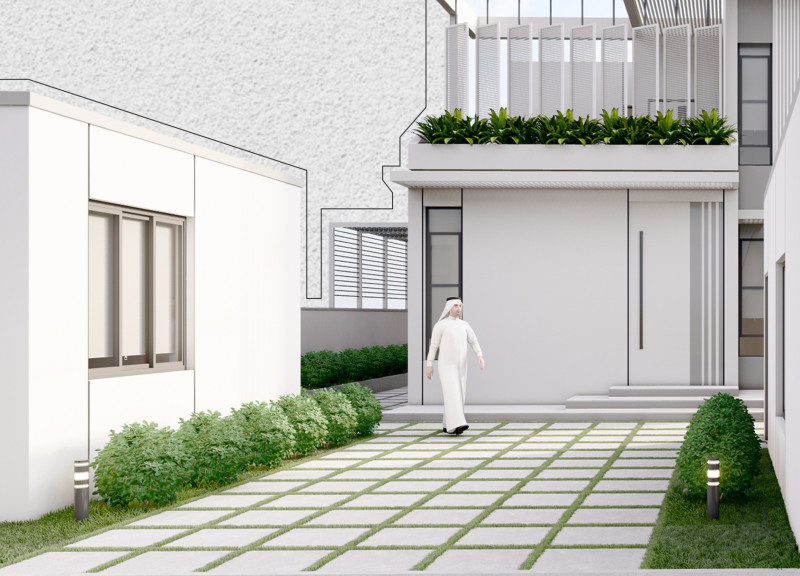5 key facts about this project
Functionally, the project serves as a multi-use space designed to accommodate various activities, including commercial, educational, and social interactions. This flexibility is evident in the layout, which prioritizes open, adaptable areas while ensuring that private sections, such as meeting rooms or individual offices, maintain a level of privacy essential for focused work or study. The design considers the diverse needs of its users, with clearly defined zones that facilitate both collaboration and solitude as required.
The architectural elements of the project are meticulously crafted, showcasing a harmonious balance between form and function. Large glass façade sections dominate the exterior, allowing ample natural light to filter into the interior spaces while providing occupants with unobstructed views of the surroundings. This design choice not only fosters a connection between the indoor and outdoor environments but also contributes to energy efficiency by minimizing reliance on artificial lighting during the day.
Materiality plays a crucial role in the overall concept and execution of the design. The project employs a careful selection of materials, including reinforced concrete, glass, timber, and steel, each chosen for its structural properties, sustainability, and visual impact. The concrete and steel elements provide durability and robustness, essential for the building's longevity, while the glass components introduce a sense of transparency and openness. Timber accents add warmth to the interior spaces, creating an inviting atmosphere conducive to social engagement.
Unique design approaches are evident throughout the project. The roof geometry is particularly noteworthy, featuring an undulating form that responds to the site’s topography, enhancing both the visual appeal and functional aspects of water runoff management. Additionally, the incorporation of green roofs and living walls contributes to biodiversity, supports environmental sustainability, and improves thermal performance. The integration of passive design strategies reflects a commitment to reducing energy consumption and promoting well-being among users.
The façade treatment is another defining characteristic of the design. It features a dynamic interplay of materials and textures, from smooth glass surfaces to textured concrete and warm timber finishes. This combination not only adds visual interest but also engages passersby, inviting them to explore the building's interior. The strategic placement of outdoor terraces and green spaces further enhances user experience, offering attractive outdoor areas for relaxation and social gatherings.
Attention to detail is apparent in the interior layout and finishes as well. The flow between spaces is intuitive, promoting movement while keeping the visual clutter to a minimum. The color palette is intentionally chosen to invoke a sense of calm and professionalism, supporting the various functions of the building. Acoustic considerations are integrated into the design, using sound-absorbing materials in communal areas to facilitate conversation and interaction without unwanted noise distractions.
This architectural project stands out due to its comprehensive approach to design, considering both the immediate context and broader environmental implications. By prioritizing user experience, sustainability, and aesthetic integrity, the project offers a model for future developments seeking to balance form with function in an urban setting. Those interested in delving deeper into the architectural plans, architectural sections, and architectural designs are encouraged to explore more details about the project presentation, as it provides further insight into the innovative ideas that shaped this noteworthy architectural endeavor.


























